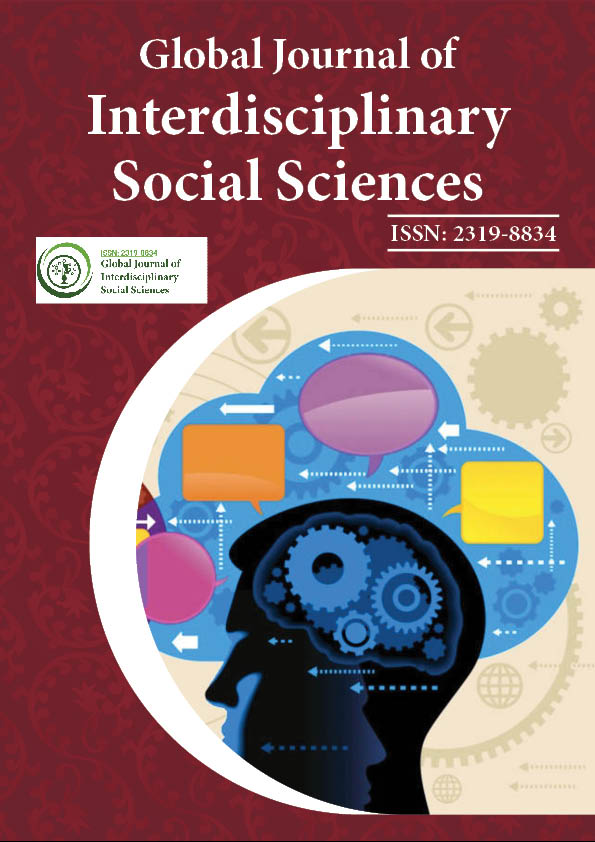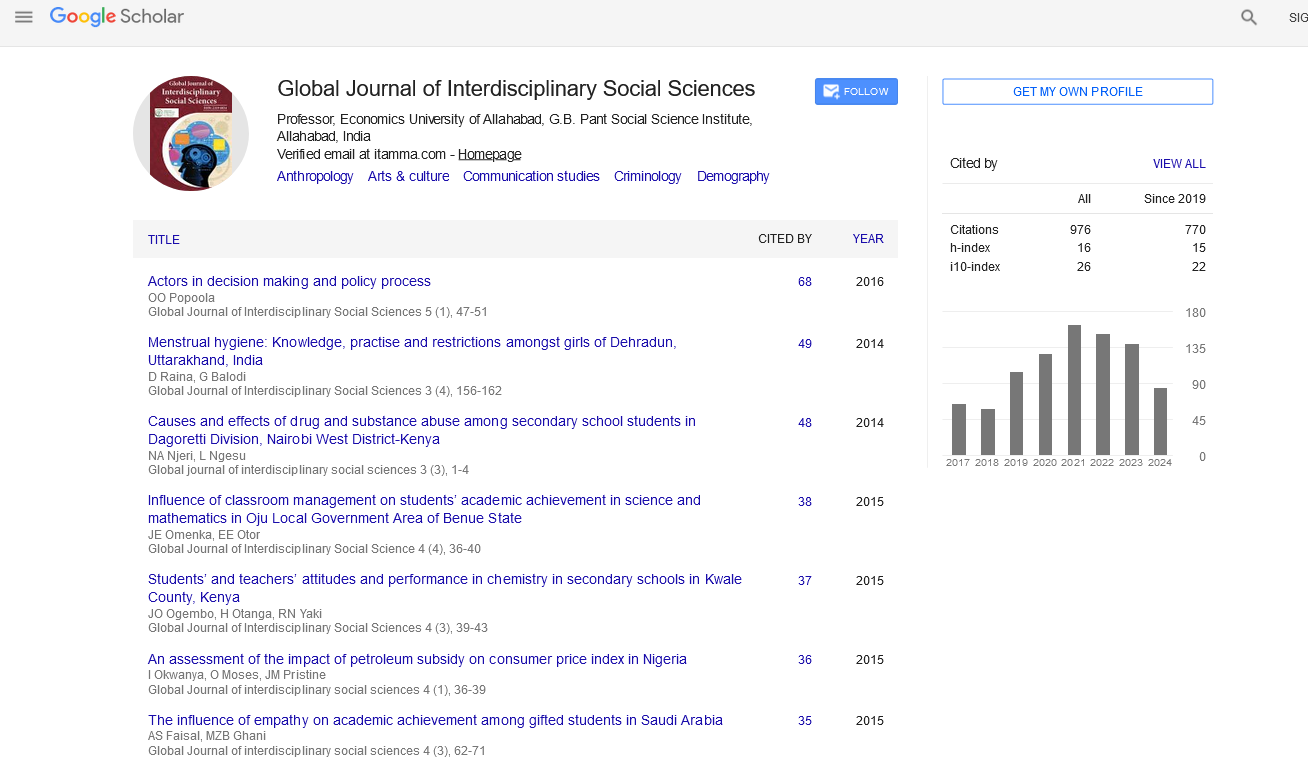Indexed In
- JournalTOCs
- Google Scholar
Useful Links
Share This Page
Journal Flyer

Open Access Journals
- Agri and Aquaculture
- Biochemistry
- Bioinformatics & Systems Biology
- Business & Management
- Chemistry
- Clinical Sciences
- Engineering
- Food & Nutrition
- General Science
- Genetics & Molecular Biology
- Immunology & Microbiology
- Medical Sciences
- Neuroscience & Psychology
- Nursing & Health Care
- Pharmaceutical Sciences
Opinion Article - (2024) Volume 13, Issue 1
Theoretical Conceptual Concerns with Growing Personnel Competence
Carlos Rivera*Received: 28-Feb-2024, Manuscript No. GJISS-24-27884; Editor assigned: 01-Mar-2024, Pre QC No. GJISS-24-27884 (PQ); Reviewed: 15-Mar-2024, QC No. GJISS-24-27884; Revised: 22-Mar-2024, Manuscript No. GJISS-24-27884 (R); Published: 29-Mar-2024, DOI: 10.35248/2319-8834.24.13.087
Description
The optimization of personnel competence has gained considerable attention in both academic and practical spheres. This article aims to clarify the theoretical conceptual issues associated with increasing personnel competence by examining its historical context and notable figures who have contributed to its development. By evaluating both the positive and negative aspects of the discourse, we can gain a comprehensive understanding of this complex topic.
The search of improved personnel competence can be traced back to the early 20th century, coinciding with the rise of industrialization and the need for efficiency in organizations. The establishment of scientific management principles by Frederick Winslow Taylor introduced systematic methods for analyzing and improving worker productivity through careful selection and training. Taylor’s methodologies laid the foundation for the modern understanding of personnel competence by highlighting the alignment of skill sets with organizational needs.
The exploration of theoretical issues surrounding personnel competence has been substantially influenced by several influential individuals. Howard Gardner's theory of multiple intelligences broadened the traditional view of competence, highlighting that individuals possess various types of intelligence, including interpersonal, intrapersonal and spatial. This recognition creates the path for customized training programs that address to various learning styles and competencies.
Furthermore, David McClelland’s work on competence-based assessment redefined how organizations evaluate personnel. His advocacy for measuring performance based on specific competencies rather than general intelligence reformed recruitment and development strategies. McClelland’s approach facilitated the establishment of competency models, which have been instrumental in aligning personnel skills with organizational objectives.
While these contributions have fundamentally advanced the understanding of personnel competence, there are also significant critiques and challenges that have arisen. One notable point of disagreement is the idea of standardization in competency models. Critics argue that such structures may unintentionally constrain creativity and innovation by highlighting conformity to predetermined criteria. The risk of over-reliance on standardized assessments can create a workforce that is proficient in specific areas but lacks the agility to adapt to novel situations, undermining the very purpose of competence enhancement.
The advancement of personnel competence brings wide range benefits to organizations, employees and society at large. Improved competence can lead to increased productivity, improved job satisfaction and lower employee turnover rates. By investing in training and development, organizations can cultivate a workforce that is not only more skilled but also more engaged and motivated. This, in turn, contributes to higher levels of innovation and organizational resilience, essential attributes in today’s rapidly changing business environment.
Moreover, the emphasis on personnel competence can promote a culture of continuous learning within organizations. As employees pursue personal and professional growth, they adopt lifelong learning, ultimately resulting in a more dynamic and adaptable workforce. Organizations that prioritize competence development are likely to attract and retain top talent, utilizing their capabilities to gain competitive advantages in the marketplace.
Despite the numerous benefits associated with increasing personnel competence, potential negative aspects cannot be overlooked. The pressure to constantly upskill can lead to employee burnout and stress, particularly when there is an expectation for individuals to engage in continuous learning without sufficient support. This phenomenon raises ethical concerns about the responsibilities of organizations to support their employees’ professional development while considering their well-being.
Additionally, the effectiveness of competency structures can be called into question if they do not appropriately reflect the actual demands of the job or the context within which employees operate. There is a risk that rigid adherence to these structures may stifle diversity and inclusivity, creating an environment that marginalizes those who may not conform to established competencies. It is essential for organizations to regularly assess and adapt their competency models to reflect the evolving nature of work and the multiple skills present in their workforce.
In conclusion, the theoretical conceptual issues surrounding personnel competence increasing are complex, reflecting historical movements in management theory and the ongoing evolution of workforce dynamics. The contributions of various scholars have significantly formed the discourse, promoting a greater understanding of how personnel competence can be effectively improved. While the positive aspects of this focus are clear, it is equally important to recognize and address the challenges that accompany such initiatives. As organizations address these complexities, a balanced and reflective approach towards personnel development will be essential for sustainable growth and success.
Citation: Rivera C (2024). Theoretical Conceptual Concerns with Growing Personnel Competence. Global J Interdiscipl Soc Sci. 13:087.
Copyright: © 2024 Rivera C. This is an open access article distributed under the terms of the Creative Commons Attribution License, which permits unrestricted use, distribution, and reproduction in any medium, provided the original author and source are credited.

